"They Taught Us to Fly"
Wright Brothers National Memorial
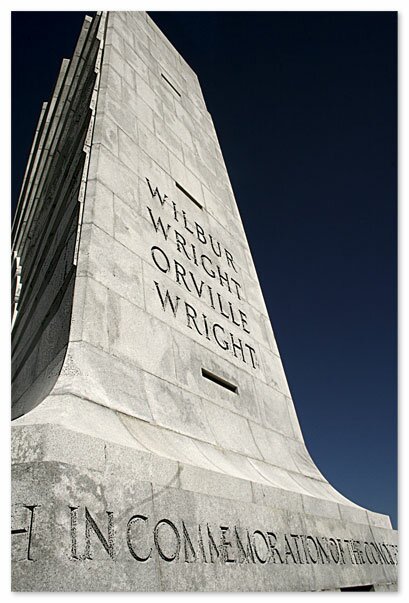
Kill Devil Hills/ Kitty Hawk NC

November 2012
All photos and illustrations by Pat Johns ©2012 - present
All Rights Reserved
See links to article references at the end of the article.
"In honoring the Wright Brothers, it is customary and proper to recognize their contribution to scientific progress. But I believe it is equally important to emphasize the qualities in their pioneering life and the character in man that such a life produced.
"The Wright Brothers balanced success with modesty, science with simplicity. At Kitty Hawk their intellects and senses worked in mutual support. They represented man in balance and from that balance came wings to lift a world."
~ Charles Lindbergh accepting the 1949 Wright Brothers Memorial Award
|
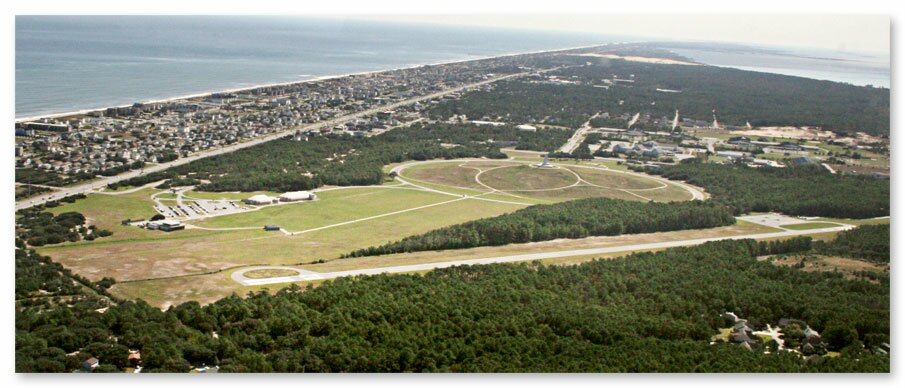 |
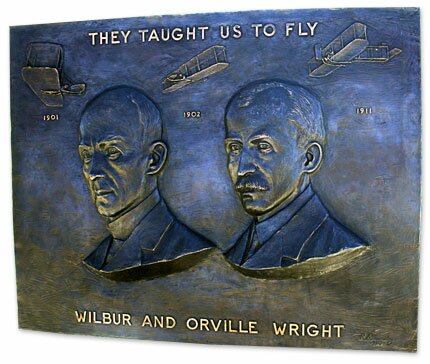
Children dream of flying, on a broomstick like Harry Potter, with wings like Tinkerbell, pulling a sled like Rudolph. And some never grow out of it. Wilbur and Orville Wright never did.
Inspired by a toy given to them by their father and fueled by the considerable practical and mechanical skills learned from their mother and grandfather, they were propelled into the race for human flight. These two brothers who designed and repaired bicycles and who never made it to college, beat engineers and even the head of the Smithsonian Institute. They had no outside financial support. They had to develop their own flight testing data, build their own engine, design and build their own propellers and risk their lives, in a world where most said that human flight would never be possible.
|
 |
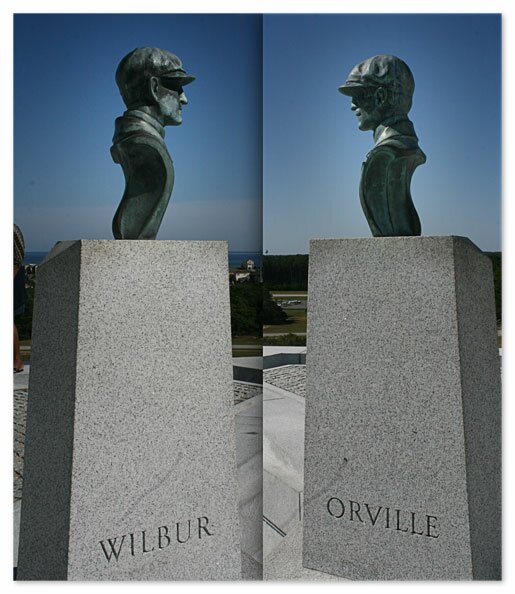
It is an awesome experience to fly to the Outer Banks and land at the airstrip by the Wright Brothers National Memorial, to see this thin strip of land made famous in national news when dangerous storms take aim at the Carolina coast. It seems appropriate that flying is the best way to get there and as you approach Kill Devil Hills you can see that it was no easy journey for Orville and Wilbur Wright.
In 1903, Kitty Hawk was the town; Kill Devil Hills was just a series of 3 sand dune formations 4 miles south of Kitty Hawk. Writer William Zinsser tells in his book "American Places" how he felt when he approached the area by car a few years ago:
"Following signs to the Wright Brothers National Memorial, I was disappointed to find that it wasn't at Kitty Hawk but at Kill Devil Hills 4 miles further south. So potent is the myth of Kitty Hawk that I didn't want the first flight not to have taken place there. . . Later Kill Devil Hills became a town in itself, giving it possession of the site, if not of the myth."
The Wright Brothers are a part of America and many share Zinsser's feeling of ownership of their story. It's Wilbur and Orville, after all. We're on a first name basis!
|

Today, most people experience flight so high above the earth, at such speeds and in such cramped conditions that the feeling of flight is lost; some passengers are even asleep as they are shot up into the air and softly landed back on the earth. Flight is something that happens to you in commercial airplanes. General aviation buffs, pilots and passengers of small airplanes who fly much closer to the earth feel the gift of flight. To them, flight is something you do, more like soaring.
|
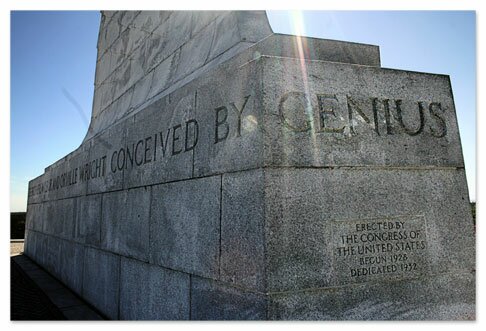
The Wright Brothers went from bicycle designers to aviation pioneers in a remarkable few years. Helped by the work of earlier glider pilots, some of whom had died on trial flights, they improved wing design, and flight controls in a computer-free world. As Wilbur Wright put it in an article for Century Magazine:
"What at first seemed a simple problem became more complex the longer we studied it. With the machine moving forward, the air flying backward, the propellers turning sidewise, it seemed impossible to find a starting point from which to trace the simultaneous reactions. Contemplation of it was confusing. After long arguments we often found ourselves in the ludicrous position of each other having been converted to the other's side, with no more agreement than when the discussion began."
|
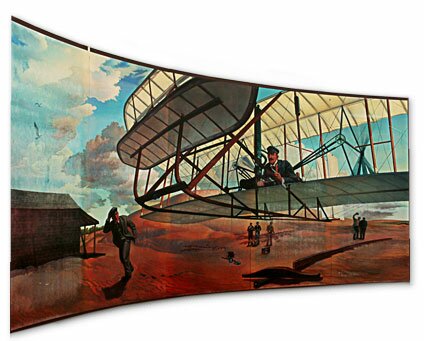
They started out with gliders, the first ones flown like kites. These flights gave them information which they converted to improved wing design and flight controls. They were on their own in propeller design which their engineer Charlie Taylor said was their design accomplishment that has been most underestimated.
Others in the race included Samuel Langley, director of the Smithsonian Institute. In 1903, his machine was launched from a houseboat on the Potomac River and "dropped like a rock" after it left the boat. In November he tried again with similar results and his pilot, Charles Manly, quit the project after nearly dying in the freezing Potomac.
|
A monument to the impossible:
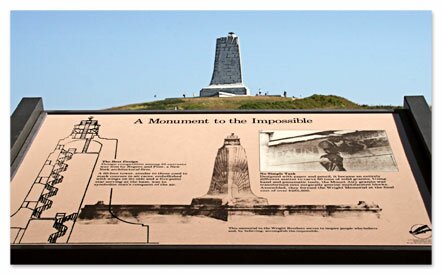 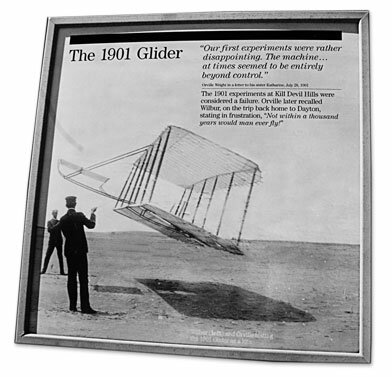
|
|
As Langley continued his experiments, the Wrights prepared for their real test. They did not get off to a good start.
On their famous 1903 journey back to Kill Devil Hills, when they arrived at Elizabeth City, the freight terminal where their flying machine parts had been shipped to had burned down. As they traveled to their camp they had no idea if their flyer was lost. It was not. It awaited them at Kill Devil Hills.
They assembled their machine always with an eye on the weather. It was almost winter and they had to take the best winds they could get. They assembled the track that would serve as their runway. On November 28 they found a crack in the propeller shaft. Orville had to take it back to their shop in Dayton to make a more durable shaft. He returned December 11. It was during the time of this trip that Langley made the attempt that sent his plane into the icy Potomac water.
|
A replica of their living quarters:

|
The 2003 Centennial Pavillion:
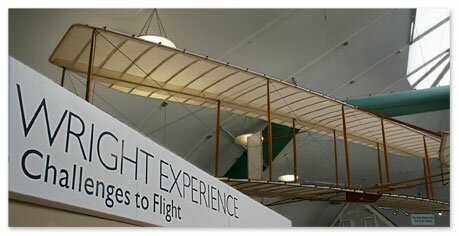
The weather was changing quickly so they decided to make an attempt on December 14. The winds were too light so they aimed the tracks downhill a bit to help the plane start.
They gathered reliable witnesses. And, after all their years of working together to get to this point, only one of them could fly it. Which one? They flipped a coin and Wilbur won.
In a sense this flight was a success at over 100 feet, but the brothers did not consider it a true test because of the downhill start.
|
Kill Devil Hills and the Memorial site:
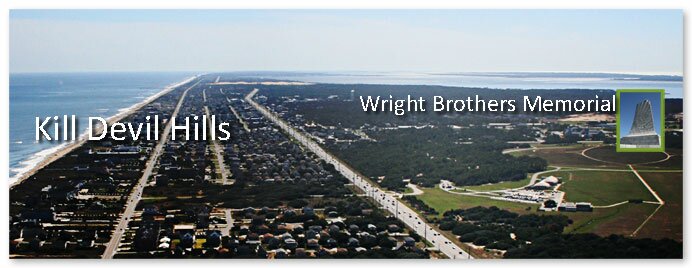
|
Portraits in the Visitors' Center with the monument in the background:
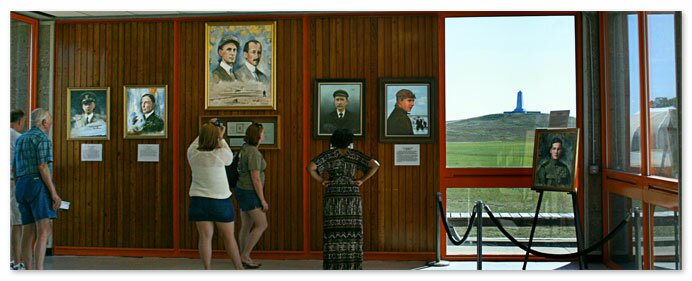
So, what was the true test? Even today you find varied descriptions of what they accomplished 3 days later on December 17. The Smithsonian, slow to recognize the Wright Brothers accomplishment, today says that it was the First Successful Airplane (see link below). FirstFlightCentennial.com says it was "the first piloted flight in history."
Orville wrote in How We Made The First Flight:
"it was the first in the history of the world in which a machine carrying a man had raised itself by its own power into the air into full flight, had sailed forward without reduction in speed, and had finally landed at a point as high as that from which it started."
|
The Visitors' Center:
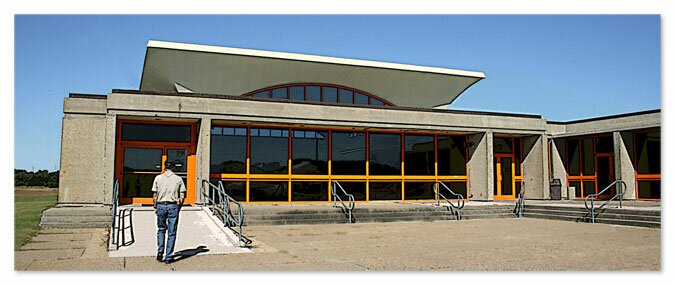
Wilbur's flight had not meet their own specific criteria. They returned on December 17. Orville was up next.
The track was set up on flat grounds. The winds were up to 24 mph. They raised the flag to tell the winesses to come. The photographer set up. The brothers clasped hands, talked briefly and Orville boarded the craft. He traveled 120 feet in 12 seconds, a bumpy ride because of the wind gusts. But that was it. It met their criteria and few today would argue with that.
|
Left: A crankcase from the 1903 Flyer. Right: A replica of their hanger.
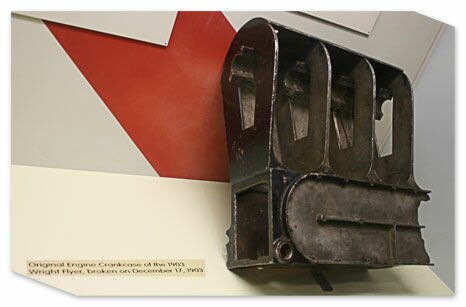 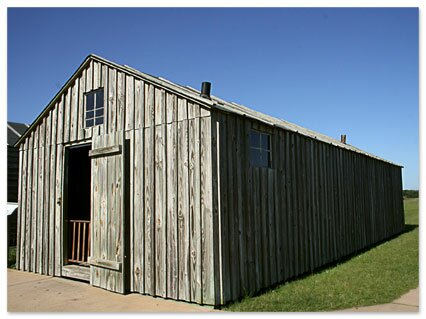
They made 3 more flights that day, next Wilbur, then Orville again, then finally Wilbur. Each flight was longer than the one before as the markers at the memorial site show. The 4th flight, its last, was 852 feet in 59 seconds, which surely must have seemed a long flight to those witnesses.
As they carried the 700 pound plane back to camp, a strong gust of wind turned the craft over on Orville and helper John Daniels. They were not seriously injured but the plane rolled over several times and never flew again.
The Wright Brothers story had many years to play out, answering challenges to their accomplishment, patent fights and developing new planes, but this Wright Brothers National Memorial Site is about a moment in time when all of their work toward a specific goal came true, like all good flying dreams.
|
Looking north to the town of Kitty Hawk.
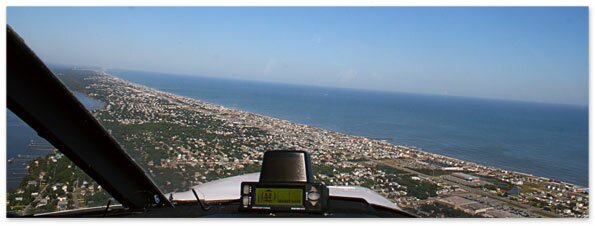
After touring the museum and the Centennial Exhibition, we boarded the plane. My eyes were fixed on the Memorial as the pilot sent us soaring above the now heaviliy populated Kill Devil Hills and Kitty Hawk and, like William Zinsser, I felt these two fascinating and so well-respected brothers were a part of my history, one that I carried back with me to our mountains.
|
Returning home to Boone.

|
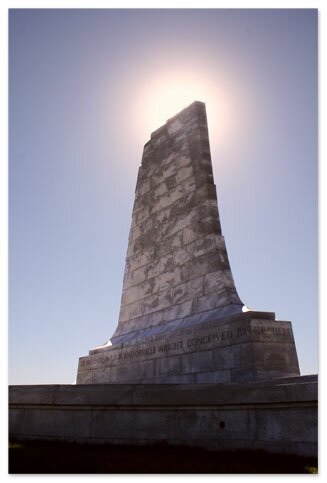
Links to more information and references used for this articlle:
|
 ------------------------------
------------------------------